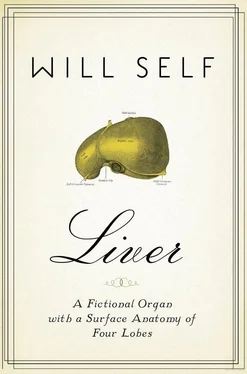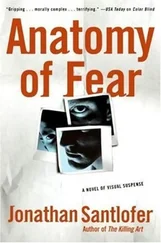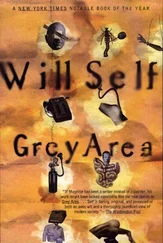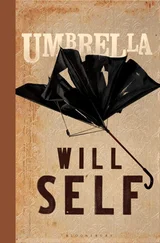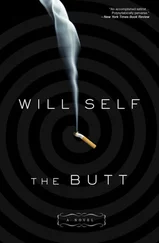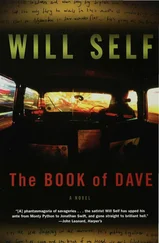The right-hand side of Blore Court was a single sweep of brickwork sixty feet high, and unrelieved by window or door. Behind this were the offices of a film distributor, where men in shirtsleeves shouted down phones at space salesmen, and runners panted as they waited for their tin discuses.
If our hypothetical flâneur had the temerity to venture deeper into Blore Court, he might — not being one of the prostitutes’ clients, who scurried, heads down, their turgid cocks dowsing for moisture — look up and notice that the left-hand side of the alley had a queerer aspect: these were the snub façades and sawn-off porticoes of a row of late-nineteenth-century retail premises, erected presumably during an odd hiatus, when the right wall of the court was temporarily lower-rise, or absent altogether.
In subsequent years these once prosperous drapers and mercers had been worked over, again and again, by the troubled genius of enterprise. Their windows had been smashed, boarded up, reglazed, then smashed again; their sign boards painted over and over, as business after business infested the light-starved showrooms, while artisan after artisan lost his — or her — eyesight in the dingy flats and garrets up above.
During the period that our story takes place — the second great epoch of the Plantation Club — Blore Court was on the skids. Chipboard covered most of the former shop windows, except for a single ‘boutique’ — as anachronistic as this designation — that struggled on at the Berwick Street end, trying to flog ‘gear’ that hadn’t been ‘fab’ since the publication of the Wolfenden Report.
Elsewhere along the alley multiple door bells studded the flaky pilasters, tangled wiring connecting those that pushed them to a multiplicity of sole traders, the bulk of whom had put their pudenda on the market. Yet there were also dental mechanics and hat blockers, Polish translators of French and French polishers, furriers whose customers were as elusive as sable and knife grinders who were none too sharp.
At 5–7 Blore Court there was one bell push labelled, quaintly, ‘French Lessons’, and a second offering the services of a ‘Model’, presumably for an artist who required neither natural light nor a subject that appeared particularly lifelike. If our wanderer had stood outside Nos. 5–7 and looked up, he would have seen the whores’ red lights cheerily illuminating the two topmost windows, and casting their russet glow on the opposite wall.
However, had he stepped in through the heavy door — an original feature, much assaulted and always ajar — he would have been assailed by the nutty odour of roasted coffee — a domestic aroma, at odds with the grimy vestibule, that was the sole legacy, besides their defunct sign, of Vinci Brothers Neapolitan Coffee Importers, who had decamped some years previously. The Brothers’ ground-floor tenancy had been taken over by a Mr Vogel, whose name plate advised that he, too, was an importer, although of what none of the other tenants had the slightest idea, never having clapped eyes on him.
Climbing the stone steps, our wanderer might well gain a sense of purpose from the ring of his steel Blakeys alone. Passing by Oswald Spengler, Rare Books, and Veerswami the locksmith on the first floor, he might detect a certain ‘come on’ in the cartoonish sign that beckoned him up the next flight: a bulbous gloved hand with The Plantation Club, Private Members painted on its index finger. To succumb would be a grave mistake, for, were he to ascend these stairs — the treads worn wood, the runners long since fled — and push open another heavy door — this one with shreds of green baize drooling off it — he would only have been confronted by the faces of the Poof, the Dog, the Extra, etc., their fleshy convolutions trapped in the gelatinous atmosphere like whelks in aspic. Then his ears would be smitten by the discord of Val’s voice — at once a whine and a grate — speaking English with an intense affectation, suggesting it was only his second language, while his mother tongue had been the now defunct theatrical — and latterly gay — argot, Polari, and enunciating the salutation that was at once a damnation: ‘Who’s this cunt, then?’
Although, to be fair, Val’s greetings even for the most staunch of his members — and they were his members, since the club was a business, and Val its only owner — were hardly more welcoming: ‘Look what the cunt’s dragged in’; ‘Managed to hoik her cunt up the stairs, has she’; and even the paradoxical ‘Hello, cunt.’
As the stage upon which these cunts strutted and fretted was now fully revealed to our imaginary wanderer, it would be — as De Quincey, another habitual Soho boulevardier once remarked — as if the ‘decent drapery’ had been twitched away, and an elderly maiden aunt were caught struggling into her Playtex 24-Hour Girdle.
A single room, twenty-four feet by seventeen; to the immediate right of the door, which was set obliquely, was the bar; behind it the expected shelves of bottles and glasses, together with a small set of optics holding the gin, whisky, vodka and rum. The dusty glasses and faded labels — Bass Ale, Merrydown, Harp — had been interposed with novelty postcards sent by roving members. At the far end of the bar sat Val, beside a large and ornate, old-fashioned cash register; sometimes he sported a collared shirt and a silk cravat, but mostly a Breton fisherman’s jersey plotted blue and white contour lines on to his hillock of a torso. However, Val’s costume was of absolutely no significance when set beside the horror mask of his face — but more of that later.
On a tall table beside Val there was a money plant, its leaves coppery in the homely light of a standard lamp with a flock shade that was always on; behind his head an orange plastic modular shelving unit had, circa 1973, been pinioned to the ancient wallpaper — wallpaper that, with its oppressively vertical bamboo motif, was the cause, not, as most neophytes assumed, the result of the club’s name. The rounded slots of the unit were crammed with girlish tat: sequinned purses; dyed peacock feathers nicked from Biba; gonks, dolls and trolls all looking faintly surprised by the pencils rammed up their jacksies. Propped on top of this excrescence there was a single artefact that summed up the desperately puerile and frantic ironizing of the establishment: a framed gold 45 rpm disc, the label of which read ‘Chirpy-Chirpy-Cunt-Cunt by Middle of the Cunt’.
On the bar-room floor was a carpet the colour of middle-aged shit, while in the opposite corner to the door an ancient partition concealed, behind its plaster and laths, a lavatory the size of a draining board: an antediluvian crapper with cracked eggshell enamel and a bird-bath sink, both reeking of ammonia.
Since nobody ever said anything in the Plantation that wasn’t facetious, there was a punning fittingness to the way the toilet intruded into the main body of the club; what little daylight leaked from the sash window to splash against its prow provided the only indication of the passage of time in this static universe. Which brings us back to the table habitually occupied by the Martian and Her Ladyship, beside the niche like a rock-cut tomb, in which stood the melody-devouring casket of the piano.
The Poof dabbled his fingers on its keys from time to time, so that it spurted out old show tunes that the others would join in massacring. On top of its lid there stood a china bust of Albert, the Prince Consort. It still had the bright glaze applied by the Royal Doulton pottery in the 1850s, but had been customized during the Punk era with a safety pin nose ring and a length of toilet chain.
This entire compromised space — at once private and public, intimate and horribly exposed — was illuminated solely by sash window, standard lamp, a few candles stuck in old Chianti bottles and a permanently fizzing rod of neon screwed to the nicotine ceiling, lending a mortuary ambience to the already deathly scene.
Читать дальше
